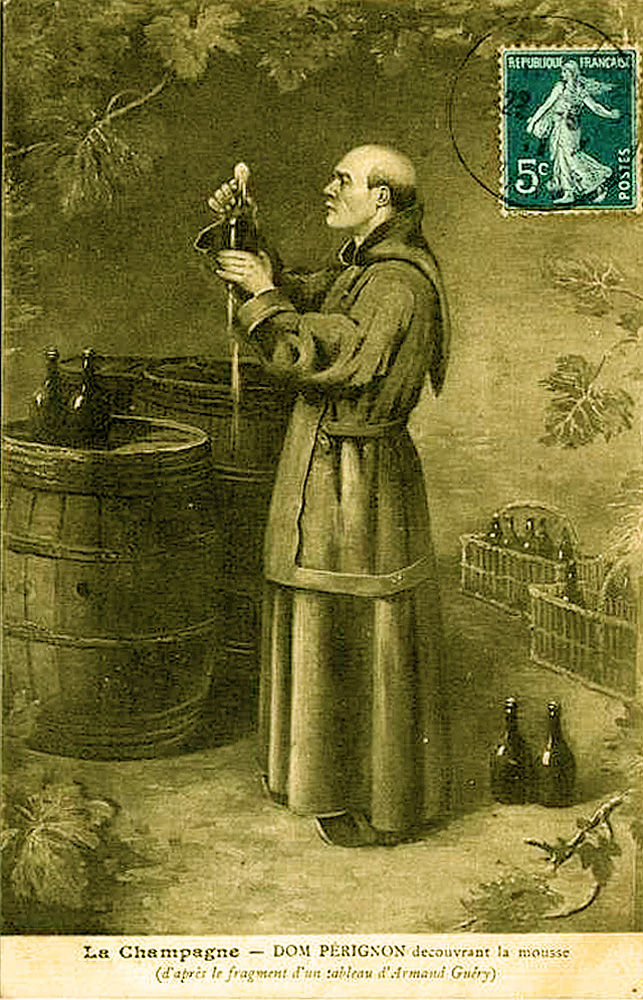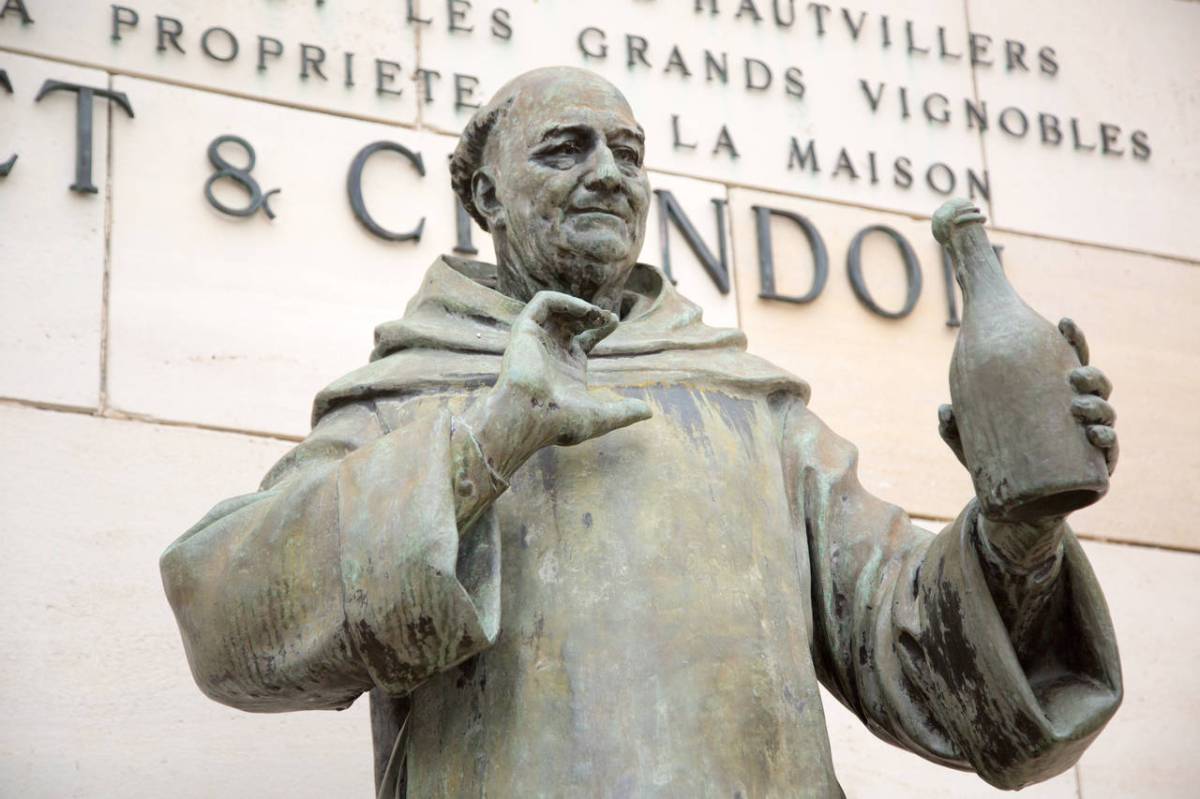Wines were near-universally red in medieval and renaissance Europe and almost always, still. The in-bottle refermentation that gives “sparkling” wine its ‘fizz’ was a problem for winemakers. Fermentable sugars were frequently left over when weather began to cool in the fall, particularly with the white grape varietals. Refermentation would set in with the warm spring weather, converting bottles into literal time bombs. Corks would pop out and wine would spoil. Sometimes the whole batch would explode, one pressurized bottle going off in sympathetic detonation with the next.

Pierre Perignon entered the Benedictine Order when he was 19, doing his novitiate at the abbey of Saint-Vannes near Verdun, later and transferring to the abbey of Hautvillers, in 1668.
According to legend it was August 4, 1697 when Brother (Dom) Pérignon called out “Come quickly, I am drinking the stars!”.
The story seems to be an 1821 embellishment by one Dom Groussard, in an attempt to increase the reputation of the abbey. The English scientist and physician Christopher Merret seems to have been the first to add sugars, beginning the refermentation process which resulted in the first carbonated wine.

Yet Dom Pérignon most certainly perfected the double fermentation process, and made important contributions to the quality of the abbey’s fine wines. He was an early advocate of natural process, farming methods we would call “organic”, today. He strictly avoided the addition of foreign substances and insisted that all blending take place at the grape stage. Pérignon insisted on “blind” tasting, not wanting to know what vineyard a grape came from prior to selection.

Pérignon didn’t like white grapes because of their tendency to enter refermentation. He preferred the Pinot Noir, and would aggressively prune vines so that they grew no higher than three feet and produced a smaller crop. The harvest was always in the cool, damp early morning hours, and he took every precaution to avoid bruising or breaking his grapes. Over-ripe and overly large fruit was always thrown out. Pérignon did not allow grapes to be trodden, preferring instead the use of multiple presses.

Dom Pérignon served as the “cellarer” of the Hautvillers abbey until his death in 1715, in a time when the abbey flourished and doubled the size of its vineyards. In a sign of honor and respect, Dom Pierre Pérignon was buried in a section of the abbey cemetery, historically reserved only for abbots.
Moët et Chandon, which began as Moët et Cie, purchased the vineyards of the Abbey of Hautvillers in 1792. To this day, Moët’s most prestigious cuvée bears the name of a certain Benedictine monk from Sainte-Menehould in the ancient Province of Champagne. Dom Pérignon.



You must be logged in to post a comment.